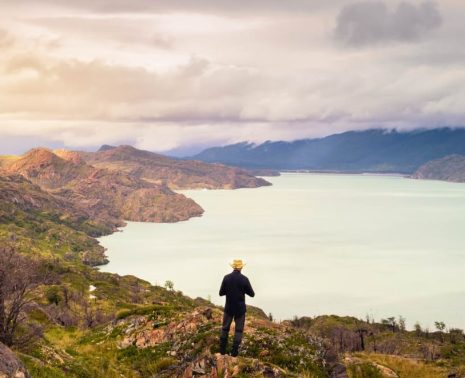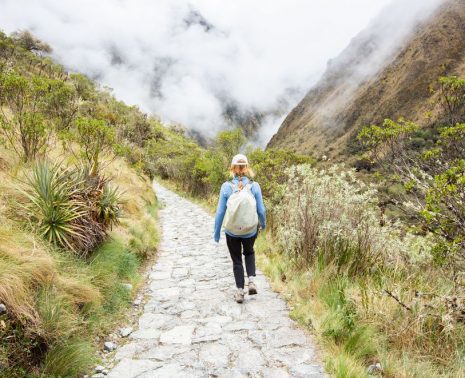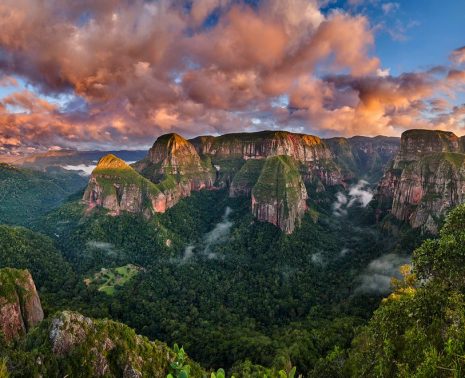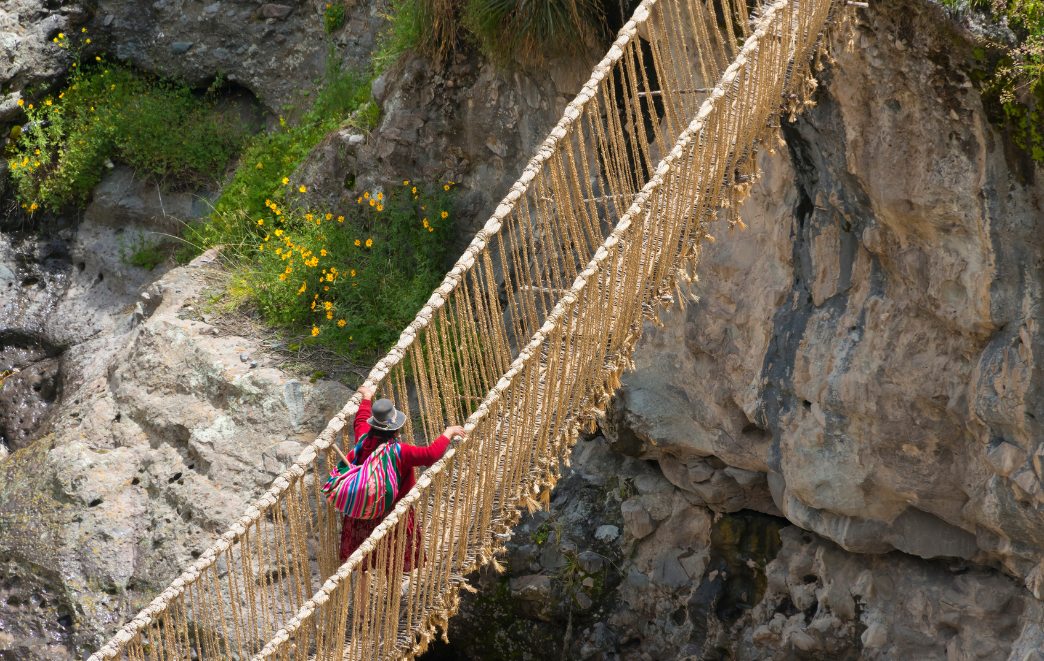
Might you be someone interested in witnessing an astonishing and highly unique Peruvian living tradition that harks back to Incan times during your tailor-made tour of Peru? I’m talking about something that only a select few tourists are able to attend each year and something that stretches the imagination of modern ingenuity: a hand-woven bridge, 33 meters long, 1.2 meters wide, and hanging 15 meters above the Apurimac river… made of pure grass!
Each year in the beginning of June, the Quechua communities of Apurimac come together to weave anew a hanging bridge in the Incan style called Q´eswachaka- “qewsa” in Quechua meaning braided rope from “qoya” a type of mountain grass and “chaka” meaning bridge. The result is a perfectly serviceable modern bridge crossing the Apurimac river, and the beloved tradition of reconstruction enthusiastically continues year after year to make sure the bridge is always stable and safe for use. In fact, each community must contribute a certain length of rope and the mayor even makes an appearance; failure to attend means a fine! Yet, with incredible sunshine, laughter and a bit of local beer, it certainly never seems like an event anyone would want to miss.
I had the very good fortune of being there for one of these constructions and am now convinced it is a must for anyone even slightly intrigued by the unique Incan engineering that lives on in Peruvian culture today; if you can’t make it in June for the construction, there are still ways to get there other times of the year to walk across Q´eswachaka and take in a peaceful moment by the Apurimac River.
Moving Away from Civilization
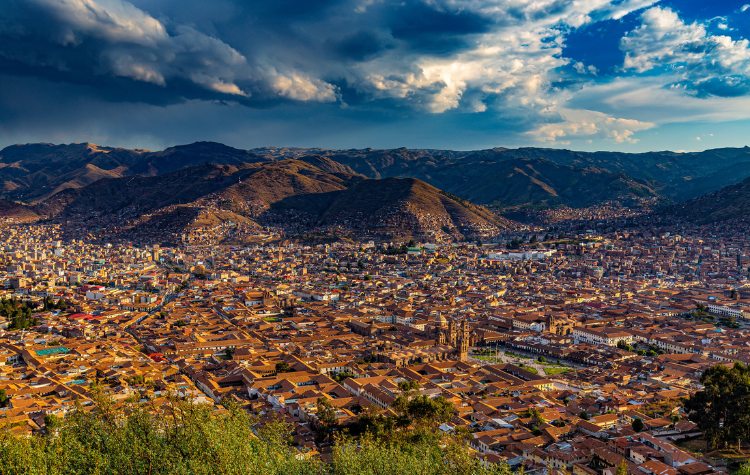
Our day-long adventure took us South, zipping out of the historic center of Cusco and past the sparse mountain flora with our chatty driver. We left the the city’s more modern urban areas behind, watching locals hurry about their daily business and hankering for a stop in one of the many pollerias, where spicy rotisserie chicken is served with hot crisp french fries, and plenty of cremas (condiments). Soon we were speeding through the small villages just outside of Cusco that each have a different culinary focus. For example, one is known for its bread and another for its cuy – the famous Peruvian delicacy – guinea pig.
Shortly, we emerged into the more agricultural part of the valley where golden fields sway and stretch out on either side of the road before bumping into the bases of the mountains that creep up suddenly like dusty green whales. While Cusco City is now starting to encroach upon the peaks that surround it, outside of the city untouched mountains tend to hem in the flats spaces. Farther away from civilization, the larger they seem.
We then skimmed along the winding road that follows a wide shallow river reflecting the incredible blue of the sky. We waved at the children herding llamas and sheep and honked at the dogs that insisted on ambling in front of our car.
As the day went on, the towns became smaller, quieter, and dustier, with mud-brick buildings hiding silent plazas. The last town called Pampamarca proudly proclaims itself the birthplace of the revolutionary Tupac Amaru. Here, we passed the legendary church where Tupac and his equally revolutionary wife Micaela Bastidas got married. Then we left comfortable roads behind and began to rattle our way up into the mountains. Some villagers had told us the bridge was half an hour away. Others said an hour and a half. In the Andes (as in my small Vermont home town) many things are “just over the next hill.”
Moving Closer to Nature – Into the High Altiplano
Our driver, undaunted, blasted his eighties mix and we just kept climbing up out of the valley, singing along with Madonna. When we reached the top, I gasped at the distance and sense of space that overwhelmed us. The high altiplano stretched away in all directions. The blue of the sky, the yellow and brown of the earth, stone… this simple palette truly creates a sense of wonder.
Now and again, a small house surrounded by fields and stone corrals built for sheep and llamas emerged from the landscape, and we spied the occasional person in the distance stacking small tents of hay. Just when the shaking of the car and largeness of the country became almost too much to fathom, a crevice seemed to open up in the earth and the Apurimac River shimmered below us.
We descended endless switchbacks (a bit harrowing, as guardrails are rare, however most drivers are switchback experts here) until we finally parked along the side of the road and stumbled into the midst of a local party.
Weaving, Cooking, Sharing, and Laughter
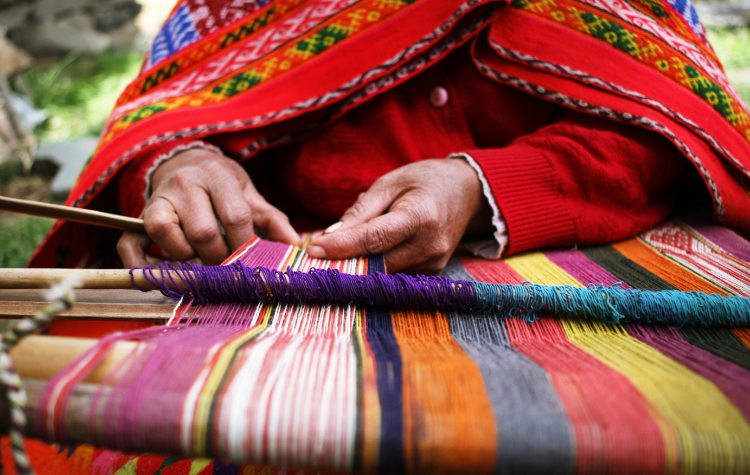
All party-goers/weavers dress in colorful traditional clothing and people of every age participate. The first day of the celebration is spent gathering the grasses (a very strong local variety) and weaving them into the ropes for the bridge. Much of this work is done by the women. Then, the next two days are spent constructing the bridge and much of this is done by the men. In fact, the women aren’t allowed near the bridge until it is complete. These types of complementary gender roles are still quite common in traditions that date back to Incan times, where men and women were both equally valued for the different jobs they put into tasks or events; the key word here is complementary, without one the other would not exist.
On each side of the river, ancient stone staircases descend steeply to stone footings for the bridge. Thick lengths of rope are strung across the gap with men from one community working on one side and men from another community on the other side. When enough ropes have been passed across to form the floor and handrails of the bridge, brave souls sit astride the ropes and begin weaving them together. They seem completely oblivious to the drop below as they inch forward.
With the smell of cooking smoke in the air, the shouts of the workers, music from rehearsals of dances, and the constant arrival of new recruits on motorbikes, it was truly an event unlike anything I’ve ever seen. The sense of community and tradition was so palpable and the landscape so hauntingly beautiful and rugged.
Engage with Tradition
What is appealing about Peru is that it is a large country with many places still relatively untouched by tourism: we were among the very very few “tourists” watching the building of this glorious bridge. In fact, in this context I would say our role became more than “tourist,” instead we became part of the experience and to that effect part of something very authentic.
Travel allows for us all to step outside of ourselves, to learn about new places and to return home with a fresh perspective. For this reason, I encourage all of you traveling to this wonderful country, for some family time, a romantic getaway or a solo journey, to take the opportunity to visit a small community. Go beyond the tourist track, meet local people, and find a way to do all of this in a sustainable manner. Ultimately, you will not only enrich your custom Peru trip but also your lives by seeing the “real” Peru! Reach out to a Kuoda Travel expert today to integrate this experience in your personal itinerary.
Everything To Know About The W Trek In Patagonia, Chile
Completing the W Trek in Patagonia is a bucket list worthy experience for any nature-loving traveler. Adventur...
Read PostHow To Sustainably Visit the Inca Trail on Your Next Trip to Peru
Trekking the legendary Inca Trail to Machu Picchu is a dream for many adventurers, but with that dream comes t...
Read PostExploring Bolivia’s National Parks: A Paradise for Outdoor Adventure Enthusiasts
Nestled in the heart of South America, Bolivia’s National Parks stand as a captivating tapestry of diverse l...
Read Post

 Call
Call 







